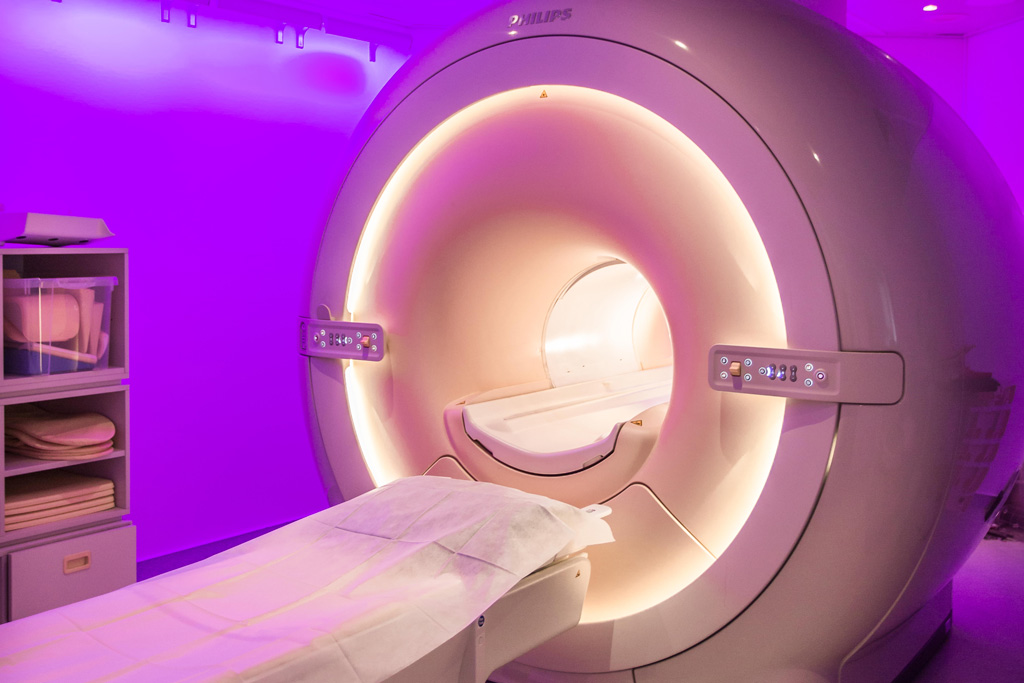The cardiac MRI is a cutting-edge medical imaging technique that displays the structures and operation of the heart.
This in-depth examination helps detect heart problems. This examination is painless and does not use X-rays, instead using a magnetic field generated by a magnet. However, some precautions should be taken, especially if you have a pacemaker or an insulin pump. You will therefore be asked to fill out a questionnaire before each examination.
Preparing for the cardiac MRI
Other abdominal or breast examinations may require specific preparation, which is not necessarily the case for a cardiac examination. Everything will depend on the protocol that must be followed.
The cardiac MRI examination procedure
Lying on a sliding table that will move towards the centre of the device, the device will remain open on both sides. The area of your body to be examined will be in the middle of the device.
The cardiac MRI device will emit an electric field. The radio frequencies of this magnetic field will transform the alignment of the hydrogen atoms contained in your body, which will enable the medical image to be constructed.
The medical team will remain nearby to communicate certain instructions to you via a microphone because it is important to remain completely still and relaxed during the MRI, which can last 20 to 45 minutes.
It can take a while and can be noisy. The cardiac MRI is a relatively large machine but you will be provided with headphones or ear plugs to reduce the noise level, with the option of listening to music of your choice. The colourful and soothing lighting atmosphere will also help you relax, if necessary.

The results of the cardiac MRI examination
At the end of the MRI examination, a medical report will be provided to you by our doctor and will be sent to your prescribing doctor. You will then be asked to wait so you can leave with your images and your MRI on a CD.
The purpose of a cardiac MRI examination
As indicated, the Cardiac Magnetic Resonance Imaging does not use X-rays. This examination uses a very powerful magnet that generates radio frequencies and a magnetic field. These waves act on the hydrogen nuclei contained in the human body.
The MRI machine then produces images of the inside of the body, from which the radiologist can establish an accurate diagnosis.
The cardiac MRI is a relatively large machine.
Using the cardiac MRI
A cardiac MRI is required for a detailed analysis of the human body and the heart.
A cardiac MRI is often used to detect heart defects, heart problems, abnormalities in the vessels, etc.
Cardiac MRI and prohibitions
Unless otherwise specified, the cardiac MRI is prohibited for those who wear pacemakers and certain metal implants. The questionnaire is essential and must be completed upon your arrival. This is why you MUST notify us of any cardiac device (pacemaker) or valve, or any parts containing iron.
At each examination, you will be asked to remove all jewellery and metal objects such as hairpins or barrettes, removable dental appliances, hearing aids, etc.
A white gown will be given to you so you can remove your clothes, which is necessary for the examination.
Learn more about MRI in Geneva
Learn more about the other examinations available at the Medimage centre: radiography and radiology in Geneva, CT scan, cardiac imaging, mammogram in Geneva, ultrasound in Geneva, elastography, biopsy in Geneva, infiltrations in Geneva, PRP infiltrations, dental panoramic or mineralometry.
Take a look at our medical team and our radiologists.
